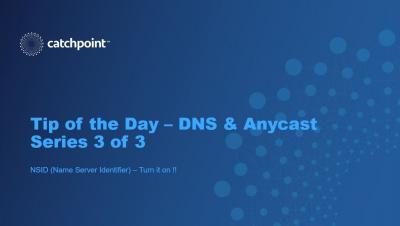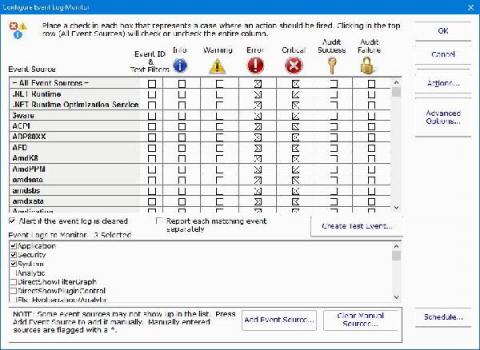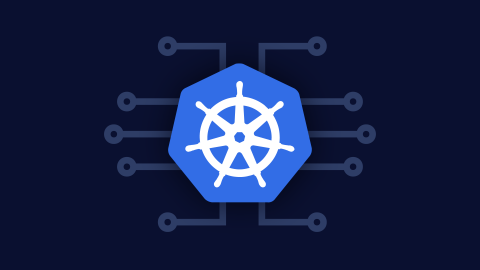Operations | Monitoring | ITSM | DevOps | Cloud
DNS
DNS Monitoring 101 - How to Guard Against DNS Attacks
Today’s Tip of the Day is the second in a three-part series on Domain Name System (DNS) monitoring. In the first, we looked at how the application delivery chain works and the way in which many companies outsource their DNS to third parties with a global presence in order to reduce latency. The connected tip was focused on ensuring users are served by the correct DNS server.
DNS Series 2 of 3 - Always be Vigilant
Server Monitoring and Alerts - Getting Past Common Obstacles
Keeping a server running optimally on a consistent basis involves managing multiple system elements simultaneously. Automated scripts and specialized software can handle the tasks your server needs to complete on a daily basis—but when one of these experiences an error, it can throw the entire system off.
DNS Blacklist Monitoring: Protect Your Company's Reputation
Did you know that around 306 billion emails have been sent globally every day in 2020 and about 45 percent of all emails received are spam. Even more surprisingly, websites that are marked as spam on email portals lose 95 percent of their traffic. Email servers tend to blacklist certain IDs as spam based on their content. And for companies marketing their business via emails, 36 percent of the total spam messages across the globe are attributed to advertising content.
DNS Monitoring 101: Verify DNS Mapping
This Tip of the Day is the first in a three-part series on Domain Name System (DNS) monitoring. The Domain Name System is often described as “the phonebook of the Internet.” While humans access the Internet via domain names such as npr.org or bbc.com, web browsers interact via Internet Protocol (IP) addresses. DNS translates domain names to IP addresses so that browsers know which Internet resources to load.
DNS Series 1 of 3 - Resolving to the correct DNS
The Basics of DNS Monitoring: What It Is, How It Works, and Why It's Essential for Your Business
On Star Trek, there’s an incredibly useful device called the universal translator. As you’d expect, it allows everyone to understand each other. For example, if Captain Jean Luc Picard bumped into a race of aliens that bore a striking resemblance to Commander Riker’s beard, then they could set a date for some Earl Grey tea (hot) thanks to the universal translator. Without it, there might be grave misunderstandings and the firing of photon torpedoes.
Overcoming DNS barriers for Kubernetes Scaling
It was a cloudy winter morning when I had arrived at the office and found, to our horror, that a Kubernetes cluster was suffering from extremely high CPU and network usage and had become almost completely non-functional. To make things worse, restarting the nodes (the go-to DevOp solution), seemed to have absolutely no effect on the issue. Something was poisoning the network and we had to find out what it was and fast.
Monitor cloud and external endpoints with Datadog DNS resolution
Your network is continuously becoming more complex. Whether you’re migrating to the cloud, deploying containers, or load balancing your applications, getting visibility into your network’s architecture is increasingly difficult—yet more important than ever.










